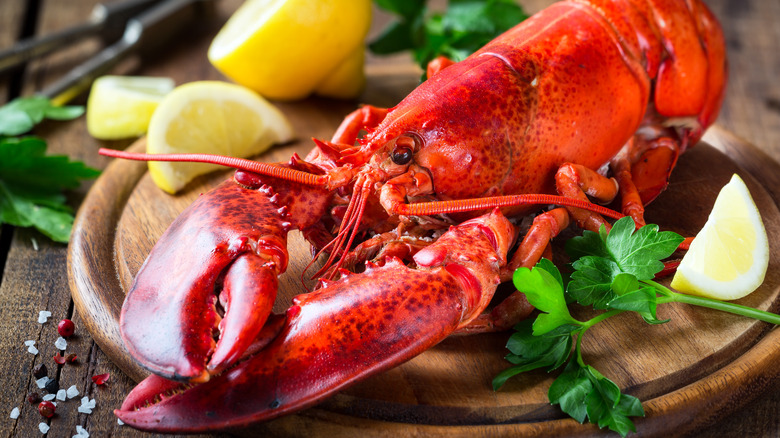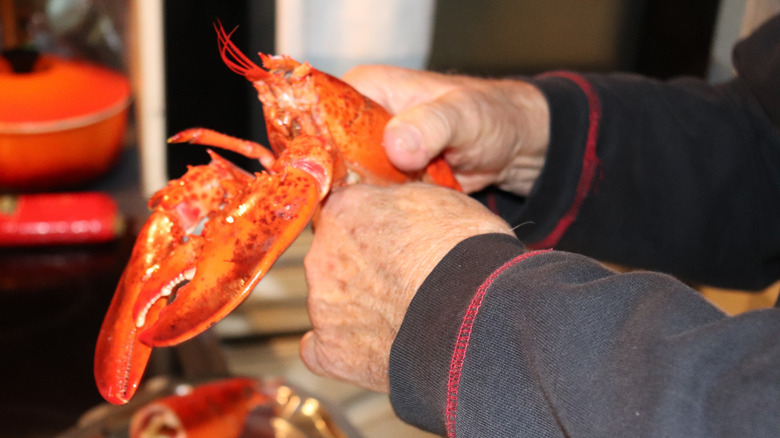The Common Blunder That Makes Shelling Lobster So Much Harder
Shelling might just be the most tedious aspect of cooking lobster at home. No matter what you do, the meat seems to be stuck to the shell. You'd think the trick of adding boiled eggs to an ice bath for a more seamless peel would apply to lobsters, but when it comes to separating the shell from lobster meat, the technique couldn't be any more different from peeling eggs. Instead of utilizing ice water, heat is better suited when removing the outer layer of this seafood.
In no way does that mean fully cooking the lobster first, a mistake that might just make shelling more difficult. If you've ever roasted lobster, you probably had trouble shelling it. Thanks to the slow build-up of heat and prolonged period in that environment, the proteins in the lobster meat will chemically bond to the shell, making the removal process less than ideal.
On the other hand, using the technique of soaking lobster in boiled water for a couple of minutes causes the exterior to heat up quickly, and in return, the meat rapidly shrinks, preventing the chemical bonds from developing. The speed at which the heat hits the submerged crustacean in steaming hot water will do wonders.
Flash cooking for easy shelling
In flash cook fashion, steep the lobsters in just enough boiled water to cover them and add white distilled vinegar. The latter serves as a flavoring component and can be substituted with white wine or fresh lemon juice. Using white wine would be ideal if you're making this buttery lobster spaghetti recipe. After letting them sit for two or three minutes, use kitchen tools to get them out of the pool of water-vinegar mixture. However, don't get too excited and dump the water — save it for when you disassemble the arms and let them steep there for an additional five minutes prior to shelling.
Though it's normal to want to wait for the lobsters to cool down before handling it, don't. Grab a towel or put on some rubber gloves because you are going to shell the lobsters while they're still piping hot. It's easier when the fat in the meat is soft from the heat and hasn't stiffened yet, which would make the shelling process more challenging.
Now that you've shelled your shellfish there's one last thing you should do before tossing the lobster shells away — save them for stock. Lobster stock is incredibly flavorful and easy to prepare, plus it makes it so even the shell won't go to waste.

